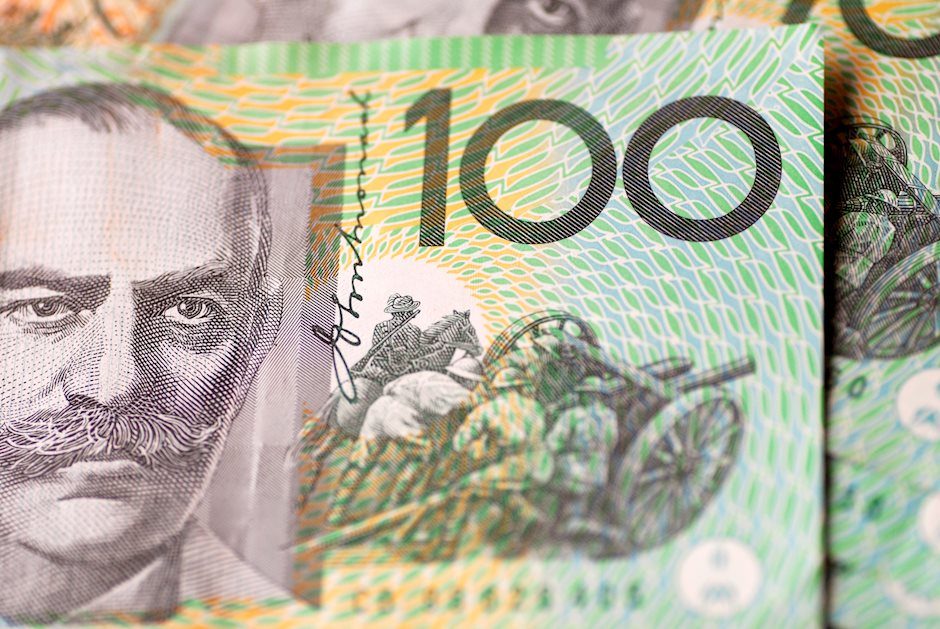AUD/USD holds recovery near 0.6600 ahead of RBA policy, US elections
- AUD/USD holds onto recovery near 0.6600 with RBA policy and US elections in focus.
- The RBA is expected to leave interest rates unchanged at 4.35%.
- Trump-Harris battle and Fed policy will keep market sentiment on its toes.

The AUD/USD pair clings to gains made in Asian trading hours near the key resistance of 0.6600 in Monday’s North American session. The Aussie pair remains firm ahead of the Reserve Bank of Australia’s (RBA) monetary policy announcement and the United States (US) presidential elections on Tuesday.
The major witnessed strong buying interest in the Asian session as the US Dollar (USD) plunged after the Des Moines Register/Mediacom Iowa Poll pointed to tough competition between current Vice President Kamala Harris and former President Donald Trump. Polls showed Harris up three points against Trump in the state where the latter won in the 2016 and 2020 elections, Reuters reported.
At the time of writing, the US Dollar Index (DXY), which gauges Greenback’s value against six major currencies, is down almost 0.6% near 103.70.
The scenario of Trump’s victory would be favorable for the US Dollar as he is expected to support protectionist policies such as a hike in tariffs on imports and lower taxes, which would prompt upside risks to inflationary pressures. While Harris's victory would signal a continuation of current policies, which would be beneficial for risk-sensitive currencies.
This week, the US Dollar will also be influenced by the Federal Reserve’s (Fed) interest rate decision, which will be announced on Thursday. The Fed is expected to cut interest rates again but at a slower pace of 25 basis points (bps) to 4.50%-4.75%. In September, the Fed started its rate-cut cycle, however, the Fed opted for a larger-than-usual cut of 50 bps.
Meanwhile, the Australian Dollar (AUD) will be influenced by the RBA’s policy in which the central bank will keep its Official Cash Rate (OCR) steady at 4.35%. Investors will pay close attention to RBA Governor Michelle Bullock’s press conference to get cues about when the central bank will pivot to policy normalization.
Australian Dollar FAQs
One of the most significant factors for the Australian Dollar (AUD) is the level of interest rates set by the Reserve Bank of Australia (RBA). Because Australia is a resource-rich country another key driver is the price of its biggest export, Iron Ore. The health of the Chinese economy, its largest trading partner, is a factor, as well as inflation in Australia, its growth rate and Trade Balance. Market sentiment – whether investors are taking on more risky assets (risk-on) or seeking safe-havens (risk-off) – is also a factor, with risk-on positive for AUD.
The Reserve Bank of Australia (RBA) influences the Australian Dollar (AUD) by setting the level of interest rates that Australian banks can lend to each other. This influences the level of interest rates in the economy as a whole. The main goal of the RBA is to maintain a stable inflation rate of 2-3% by adjusting interest rates up or down. Relatively high interest rates compared to other major central banks support the AUD, and the opposite for relatively low. The RBA can also use quantitative easing and tightening to influence credit conditions, with the former AUD-negative and the latter AUD-positive.
China is Australia’s largest trading partner so the health of the Chinese economy is a major influence on the value of the Australian Dollar (AUD). When the Chinese economy is doing well it purchases more raw materials, goods and services from Australia, lifting demand for the AUD, and pushing up its value. The opposite is the case when the Chinese economy is not growing as fast as expected. Positive or negative surprises in Chinese growth data, therefore, often have a direct impact on the Australian Dollar and its pairs.
Iron Ore is Australia’s largest export, accounting for $118 billion a year according to data from 2021, with China as its primary destination. The price of Iron Ore, therefore, can be a driver of the Australian Dollar. Generally, if the price of Iron Ore rises, AUD also goes up, as aggregate demand for the currency increases. The opposite is the case if the price of Iron Ore falls. Higher Iron Ore prices also tend to result in a greater likelihood of a positive Trade Balance for Australia, which is also positive of the AUD.
The Trade Balance, which is the difference between what a country earns from its exports versus what it pays for its imports, is another factor that can influence the value of the Australian Dollar. If Australia produces highly sought after exports, then its currency will gain in value purely from the surplus demand created from foreign buyers seeking to purchase its exports versus what it spends to purchase imports. Therefore, a positive net Trade Balance strengthens the AUD, with the opposite effect if the Trade Balance is negative.
Author

Sagar Dua
FXStreet
Sagar Dua is associated with the financial markets from his college days. Along with pursuing post-graduation in Commerce in 2014, he started his markets training with chart analysis.
















